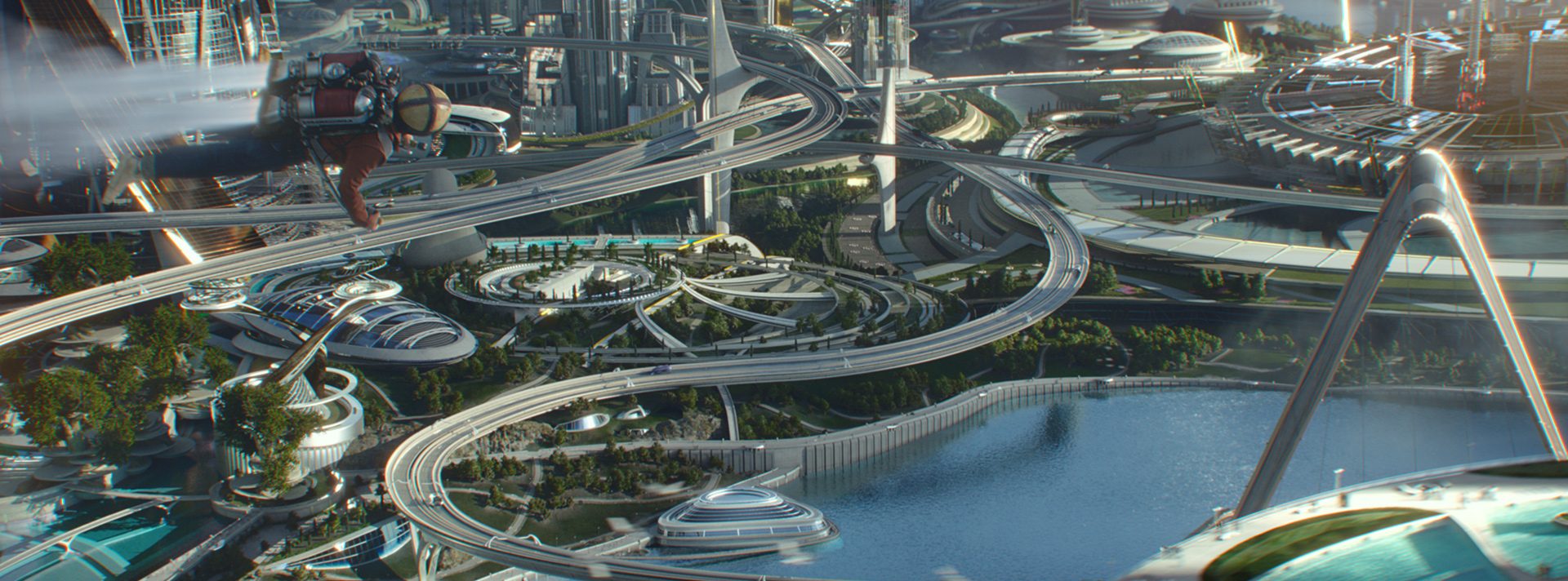Early in pre production director Brad Bird and his team of filmmakers decided that Tomorrowland would push to be the first movie to be authored for Dolby’s new extended HDR format of Dolby Vision and in 4K. From an effects standpoint that was exciting, but also a bit daunting. There’s no doubt that a more vivid image with expanded brightness, contrast and color would make even the most basic photographic footage better, but it would also bring greater demands on the visual effects work as it now had a much broader palette to have to match into.
ILM’s San Francisco and Vancouver teams contributed 1,008 visual effects shots to the film including 7 unique scenes of vast global environmental devastation, including fire tornadoes, volcano eruptions, nuclear destruction, glacial melting and the oceanic reclamation of New York and Florida which we would project into the space of The Monitor sphere. To accomplish this we collaborated with our director of photography, Claudio Miranda, to design a cylindrical LED panel rig with an LED ceiling that would surround our actors and provide interactive lighting.
In addition, ILM provided a variety of effects for the house attack sequence, the toy store destruction, jetpack flying sequences, and more, including creating Tomorrowland itself as seen in three distinct time periods in the city’s evolution: 1964, 1984 and 2014. Collaborating closely with production designer Scott Chambliss, the final result was a true, a functioning version of the place that Walt and Disney Imagineering alluded to in Disneyland’s original Tomorrowland while also incorporating Brad’s and writer Damon Lindelof’s vision of the city.
